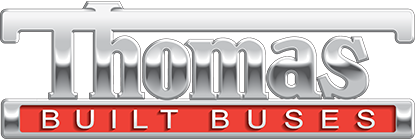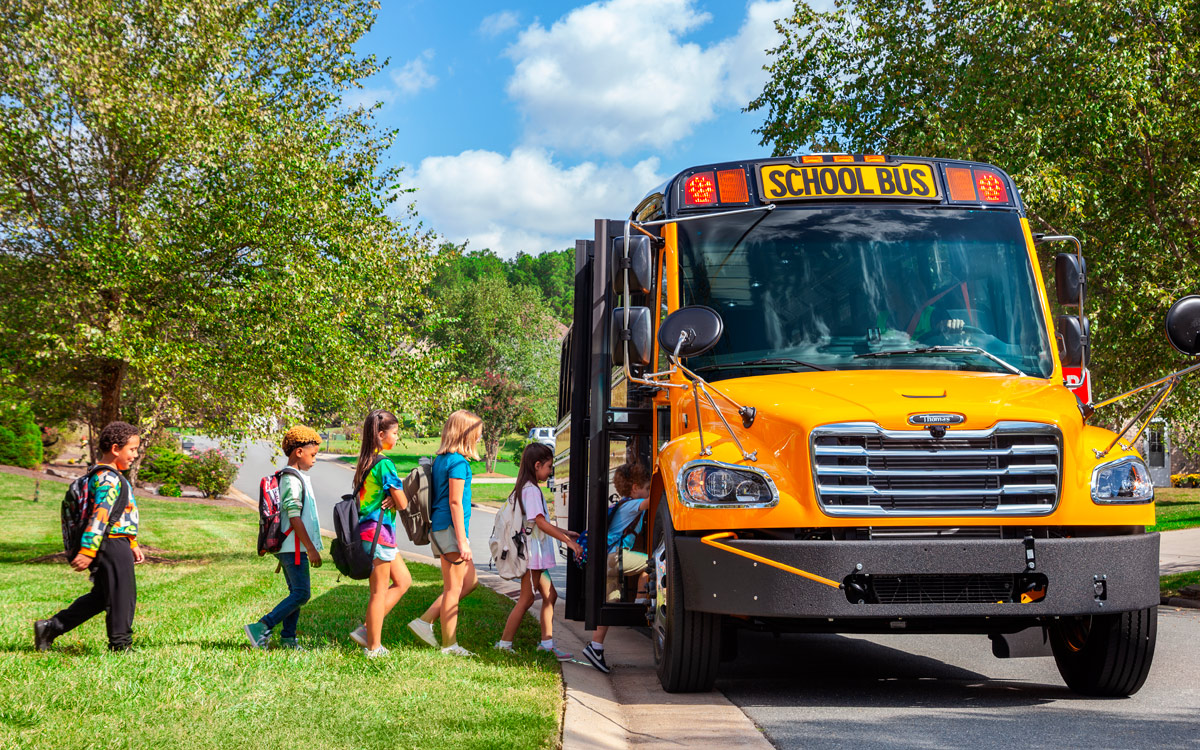
In today’s rapidly evolving industrial landscape, sustainability has become a global focus. But what does that even mean? For Thomas Built Buses, it’s about defining our commitment to our organization, our industry and the communities we serve. While our electric school bus, the Saf-T-Liner® C2 Jouley®, and its many milestones (including the recent delivery of our 1,000th) often come to…
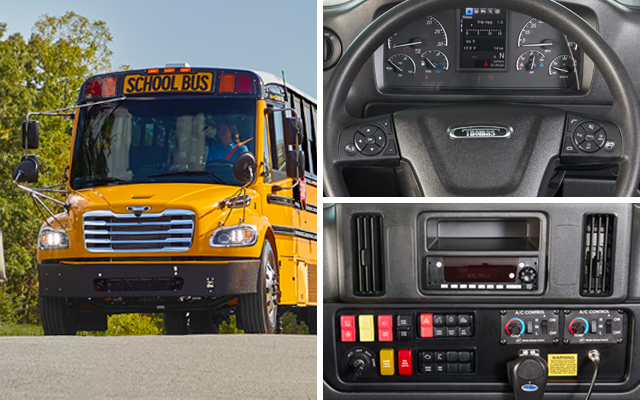
Upgrading the C2’s User-Experience for a New Era of Drivers
Student safety is in the hands of school bus drivers. The more comfortable and confident drivers feel, the more safely they drive.
For the last 20 years, Thomas Built Buses has supplied the industry with advanced electronics engineered with safety prioritized in every detail. Our Saf-T-Liner® C2 was designed…
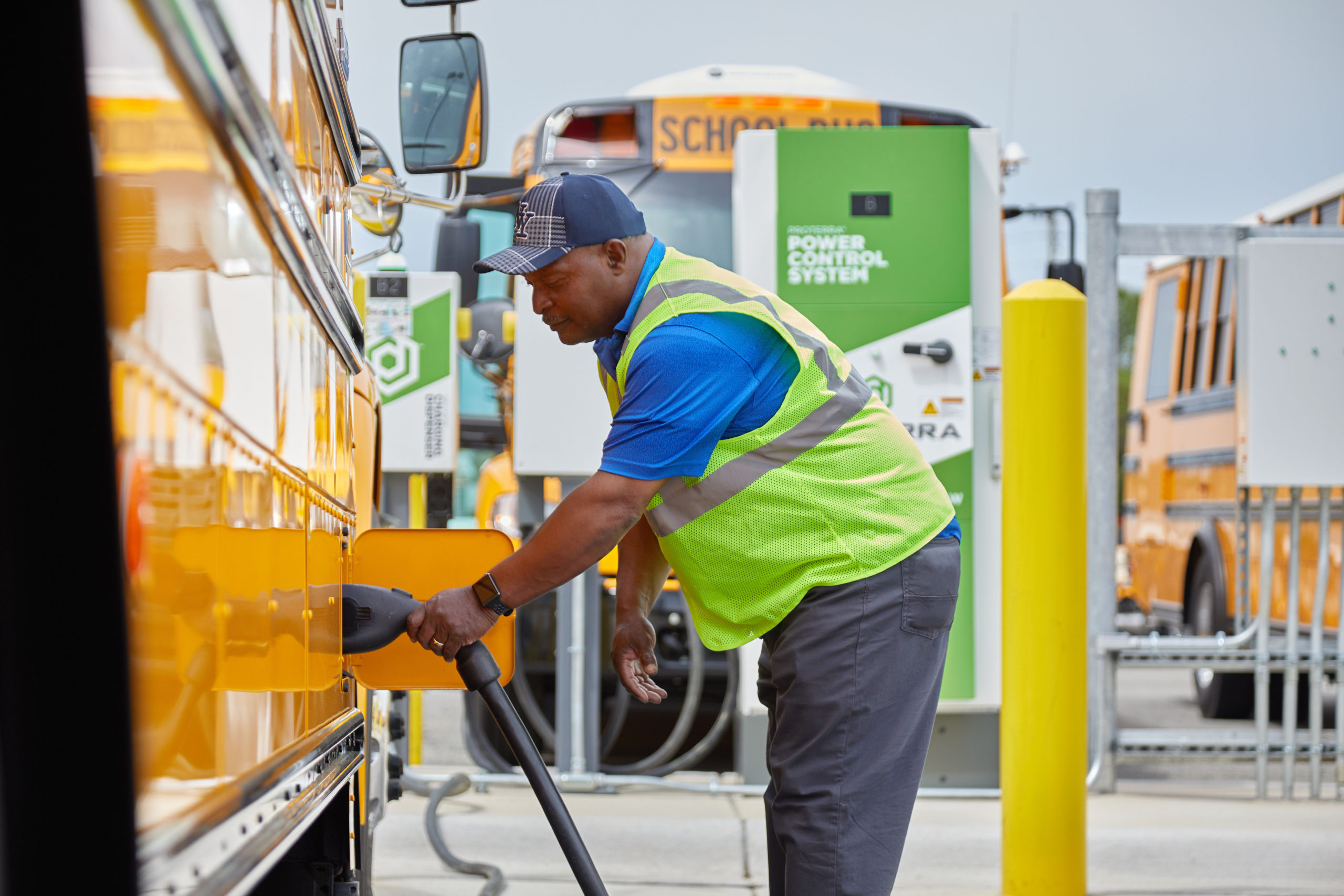
As electric school buses continue to gain momentum across the U.S. through federal incentives like the EPA’s Clean School Bus Program, school districts are looking for help in transitioning their traditional bus fleets to electric, including building out electric vehicle (EV) infrastructure.
Building and implementing charging infrastructure can be a daunting task, with challenges…

From Kendra Eads, VP of Engineering and Technology at Thomas Built Buses
As we gear up for the back-to-school season, it’s important to recognize the significant advancements in school bus technology that enhance the safety and well-being of our students during their daily journeys.
At Thomas Built Buses, our commitment to safety is evident in our mission and…
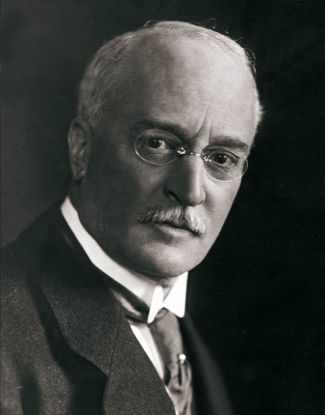 Photo courtesy of https://www.dieselnet.com/tech/diesel_history.php
Photo courtesy of https://www.dieselnet.com/tech/diesel_history.php
Diesel has a long history of success and performance, yet new and exciting innovations on the horizon continue to transform the industry. Take a look for yourself at how far diesel engines have come and where they are going.
You usually don’t hear diesel engines and innovation in the same sentence. However, diesel engines in fact may be the most innovative school bus engines today. New diesel engines manufactured just for the medium-duty school bus market provide best-in-class fuel economy, reliability and maintenance intervals. Plus, diesel engines are comparable or even cleaner than engines of other fuel types based on EPA regulated emissions. While other types of engines are just being developed, the diesel engine has stood the test of time and has been refined, enhanced and strengthened over the past 100 years.
Even in the early 1900’s diesel was more efficient and reliable than the gasoline engine that had been invented 20 years earlier, mainly due to the rate at which diesel fuel is burned and its use of generated heat. Unlike other fuels, diesel is proven. School bus fleets have been running on diesel fuel for more than 20 years and many of these diesel engines continue to be reliable and durable, having stood the test of time. Around 93% percent of today’s school buses run on diesel power and for good reason.
Diesel engines are built for the medium- and heavy-duty commercial grade market. Conversely, alternative fuel engines are upfitted and are not built for the school bus market. The result is that diesel engines can last up to 15-20 years, while other engine platforms may need to be replaced multiple times during the normal lifecycle of a school bus.
Diesel has a long history of success and performance, yet new and exciting innovations on the horizon continue to transform the industry. Take a look for yourself at how far diesel engines have come and where they are going.
History of the Diesel Engine
1893 – Rudolf Diesel creates the first prototype of a diesel engine. ***
1909 – The German engineer and inventor, Prosper L’Orange, received a patent for a pre-combustion chamber in the diesel engine, which made possible the development of the diesel engine from a stationary source of power to one with mobile applications. **
1908 – 1922 – L’Orange worked at Benz & Cie. in Mannheim, Germany to evolve the diesel engine into a compact, high-speed vehicle drive system. Yes, this is the same Benz that later formed Mercedes Benz, part of the Daimler Truck North America network (parent company of Thomas Built Buses). **
1916-1919 – Original equipment manufacturers such as Cummins and Detroit Diesel began to form. Today, Detroit Diesel, now known as Detroit, continues to manufacture school bus engines like the new DD5™ and DD8™, among others, in Mannheim, Germany as well as in Detroit, Michigan. **
1936 – Mercedes-Benz launches the world’s first diesel passenger car, the 260D. *
1900s to 1960s – The diesel engine gained popularity, yet remained much the same during this time with few new developments. **
1960’s – Diesel became the predominant source of power for the commercial trucking industry. **
1972 – The Clean Air Act was enacted to control air pollution at the national level, which in part resulted in the reduction of emissions for on-road vehicles like commercial trucks. The guidelines would later impact school buses. ****
1980’s – The diesel engine was introduced to the school bus market. *****
1985 – As a result of the Clean Air Act of 1972, EPA announced a national strategy to reduce toxic air pollutants. The strategy sought to minimize diesel truck and bus exhaust such as particulate matter, nitrogen oxides, black carbon, sulfur dioxides, and 40 other chemicals officially classified as “hazardous air pollutants.” While diesel-powered trucks made up only 2% of vehicles in the U.S., their exhaust was responsible for more than 60% of all particulates and nearly half of all nitrogen oxides. ****
Early 1990s – Congress added the Clean Air Act Amendments (CAAA). As part of that updating process, new targets were set to further reduce truck and bus exhaust emissions in phases between 2004 and 2010. ****
1994 –The school bus industry saw a huge turning point in the evolution of diesel engines to meet EPA guidelines with the introduction of SCR engines.
1997 – Emission reductions were “pulled forward” to start in 2002 instead of 2004 as planned. Updates to diesel engines to meet these reductions were completed in two additional phases in 2007 and 2010. The EPA also created a specific “step-down” path to follow in terms of staged reductions in emissions, measured in grams per horsepower-hour (g/hp-hr). ****
2002 – EPA emissions levels were set to 2.4 g/hp-hr for nitrogen oxides and 0.1 g/hp-hr for particulate matter.****
2007 – The EPA decreased the nitrogen oxides emission level to 0.20 g/hp-hr, while the particulate matter level has remained unchanged. To put that into perspective, that is a 90% decrease from the 1994 emissions guidelines. ****
2010 – All on-road diesels were equipped with nitrogen oxide scrubbers (either absorbers or selective catalytic reduction systems, depending on the vehicle size), eliminating smog-forming nitrogen oxide compounds as well as diesel particulate filters, helping to lower nitrogen oxide and virtually eliminate soot. ** / ******
2017 – Cummins released its next generation 2017 diesels, with significantly redesigned emissions controls and improved fuel economy.
2017 – The Detroit DD5™ and DD8™ engines debut, suited for the Saf-T-Liner® C2 and Saf-T-Liner® HDX respectively. Both engines offer best-in-class efficiency, fuel economy, maintenance and emission reductions.
Resources
* Gibson, Tim. (2015, November 10). A Brief History of Diesel Fuel. Retrieved from http://www.telegraph.co.uk/sponsored/motoring/diesel-performance/11956048/diesel-fuel-history.html
** Kotrba, Ron. (2009, July 15). Milestones in Diesel Technology. Retrieved from http://www.biodieselmagazine.com/articles/3617/milestones-in-diesel-technology
*** Jaaskalainen, Hannu. (2013, November). Early History of the Diesel Engine. Retrieved from https://www.dieselnet.com/tech/diesel_history.php
**** Kilcarr, Sean. (2010, February 1). The Long Journey of Clean Trucks. Retrieved from http://fleetowner.com/regulations/long-journey-clean-truck-0201
***** Retrieved from https://en.wikipedia.org/wiki/School_bus
****** Diesel Net. Heavy-Duty Onroad Engines. Applicability and Testing. Retrieved from https://www.dieselnet.com/standards/us/hd.php
